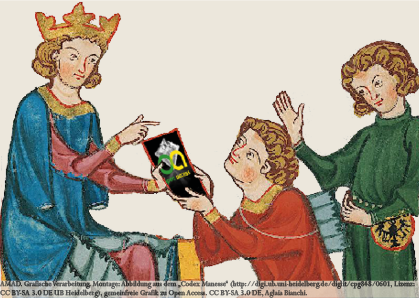AMAD
"Archivum Medii Aevi Digitale - Specialized open access repository for research in the middle ages"To submission

Full metadata record
| DC Field | Value | Language |
|---|---|---|
| Contributor | The Pennsylvania State University CiteSeerX Archives | - |
| Author | Michael Scott Cuthbert | - |
| Author | Forrest Kelly | - |
| Author | Prof Thomas | - |
| Date | 2000 | - |
| Other Identifier | http://www.trecento.com/research/early_polyphony.pdf | - |
| Other Identifier | http://citeseerx.ist.psu.edu/viewdoc/summary?doi=10.1.1.549.860 | - |
| URI | https://www.amad.org/jspui/handle/123456789/72670 | - |
| Description | The distinction between high and low vocal style in the fourteenth and early Wfteenth centuries once seemed quite clear. To the former belonged the songs comprising the great codices: manuscripts, sometimes lavishly decorated, copied long after the music was Wrst composed, and dedicated to the preservation of these pieces as a repertory. To this largely Italian group were added sacred pieces of French origin in a similarly reWned style, such as the isorhythmic motets and mass of Guillaume de Machaut—music for connoisseurs and not necessarily or primarily of practical use in any particular liturgy. Low vocal style was everything else, including monophonic chant, unica songs in fragmentary sources, sacred polyphony in liturgical manuscripts, and secular monody. Work conducted in the last four decades has expanded the purview of both sides of this cultural gap without attempting to eliminate it completely. The reach of low vocal style has been extended through focused attention on note-against-note unmeasured polyphony,1 studies of the unwritten tradition of sicilianas in Italy,2 and increased work on the connections between vocalists and instrumentalists.3 On the other side, much more attention has been paid to the context of pieces in the high art style which were not fortunate enough to be found in the great song manuscripts of Tuscany. Studies of manuscript fragments transmitting art music have especially | - |
| Format | application/pdf | - |
| Language | eng | - |
| Rights | Metadata may be used without restrictions as long as the oai identifier remains attached to it. | - |
| Keywords | 2 PirrottaN | - |
| Dewey Decimal Classification | 940 | - |
| Title | Music 213r: Topics in Medieval Polyphony | - |
| Type | text | - |
| AMAD ID | 568298 | - |
| Year | 2000 | - |
| Open Access | 1 | - |
| Appears in Collections: | BASE (Bielefeld Academic Search Engine) General history of Europe | |
Files in This Item:
There are no files associated with this item.
Items in DSpace are protected by copyright, with all rights reserved, unless otherwise indicated.

